Mission Emphasis and Initiatives Inform Treasurer’s Report at Annual Council
GC treasurer Paul H. Douglas calls to refocus our efforts on frontline outreach and evangelism.
October 20, 2025 | Silver Spring, Mayrland, United States | Marcos Paseggi, Adventist Review
“I commit to this body and to the world church to be a faithful steward of the resources God has provided His church to be used for His mission,” said Paul H. Douglas, General Conference (GC) treasurer, on his opening remarks October 13. Douglas and the team he leads presented the “Integrated for Mission” treasurer’s report to the GC Executive Committee (GC EXCOM) assembled at the denomination headquarters in Silver Spring, Maryland, United States.
Strength, Stewardship, and Strategy
After introducing his team, Douglas introduced the three areas of emphasis for this quinquennium. The first point of emphasis he shared was strength. The idea here is that church entities should be operating a level of self-support and not dependent on appropriations. “It means being able to live within [its] means,” Douglas said, “not depending on appropriations to address operational expenses . . . but to make mission investments.” Douglas also called on church leaders to be “careful as we look at our growth, to not be so quick to grow our administrative entities” but to use an increasing amount of funds “for mission, not machinery.”
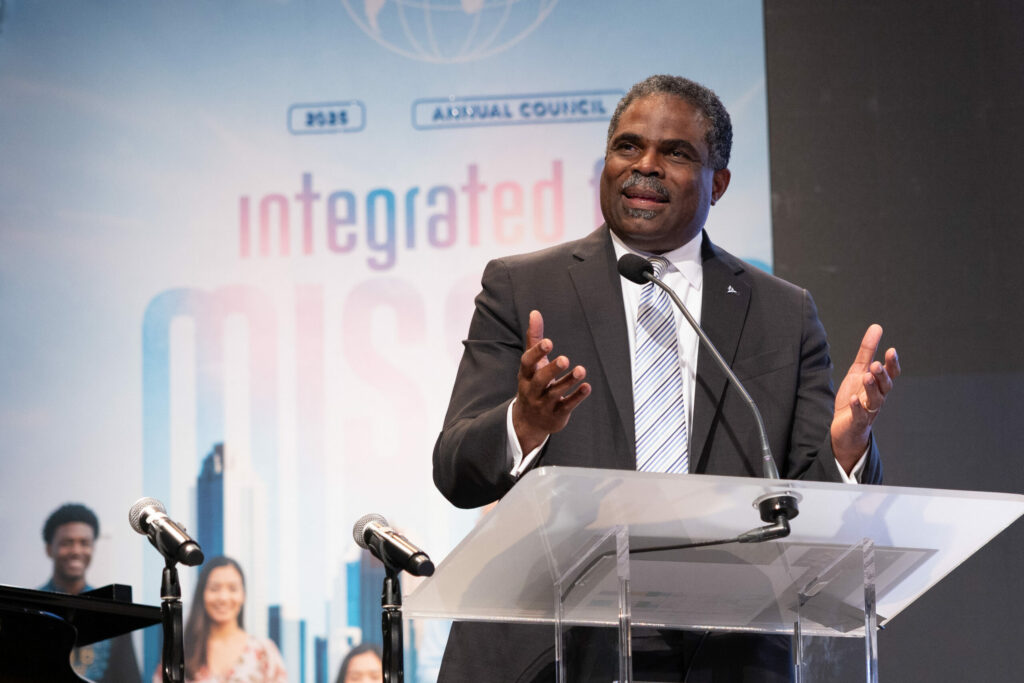
Paul H. Douglas, General Conference treasurer, presents his report to the General Conference Executive Committee during the 2025 Annual Council. [Photo: Peterson Fagundes]
Douglas also referred to a partnership with the GC Stewardship Department, which will focus on five areas of emphasis and collaboration. Among them is the belief that “stewardship is about faith-raising, not fund-raising,” and that church leaders must “value the confidence of [church] members.” It also states that “stewardship principles guide every aspect of daily living,” and that “stewardship is for everyone, everywhere.”
Finally, Douglas addressed strategy, which includes making evidence-based decisions, maximizing the impact of mission investments, and mobilizing resources for mission. “Let’s do more of what works, [but] if something doesn’t work, let’s try something else,” he suggested.
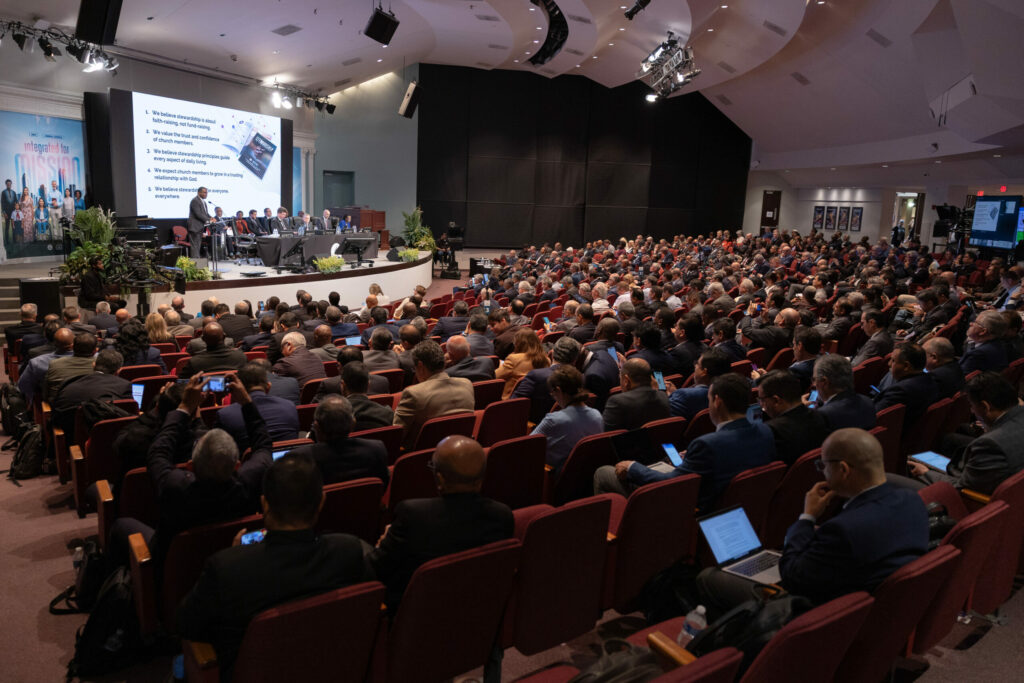
Paul H. Douglas, General Conference treasurer, presents his report to the General Conference Executive Committee during the 2025 Annual Council, held in Silver Spring, Maryland, United States. [Photo: Peterson Fagundes]
The Global Economy Impact on the Church
After Douglas, Timothy Aka, GC associate treasurer in charge of investments and banking, presented an overview of the world economic situation and what it means for the church. In that overview, Aka described the U.S. dollar as the world’s primary reserve currency in financial markets that allows the U.S. government to borrow at lower interest rates and to run larger trade deficits. He also shared, however, that some foreign nations want to move away from the U.S. dollar.
Other challenges, according to Aka, include the increasing level of the U.S. government borrowing, the threat of inflation, and the labor supply uncertainty. Despite all that, he emphasized, “the U.S. dollar is not likely to lose the reserve currency status anytime in the near future.”
Aka shared that he always thinks about how this could affect the work of the church in the future, including the prophetic role of the U.S. in global events. While Aka acknowledged he is not sure how the prophetic details will play out, the shifting winds certainly can affect the work of the church, including “our ability to conduct business the way we’ve done [and] move funds around the world to support our work.” It is the reason, Aka emphasized, that self-support becomes much more important.
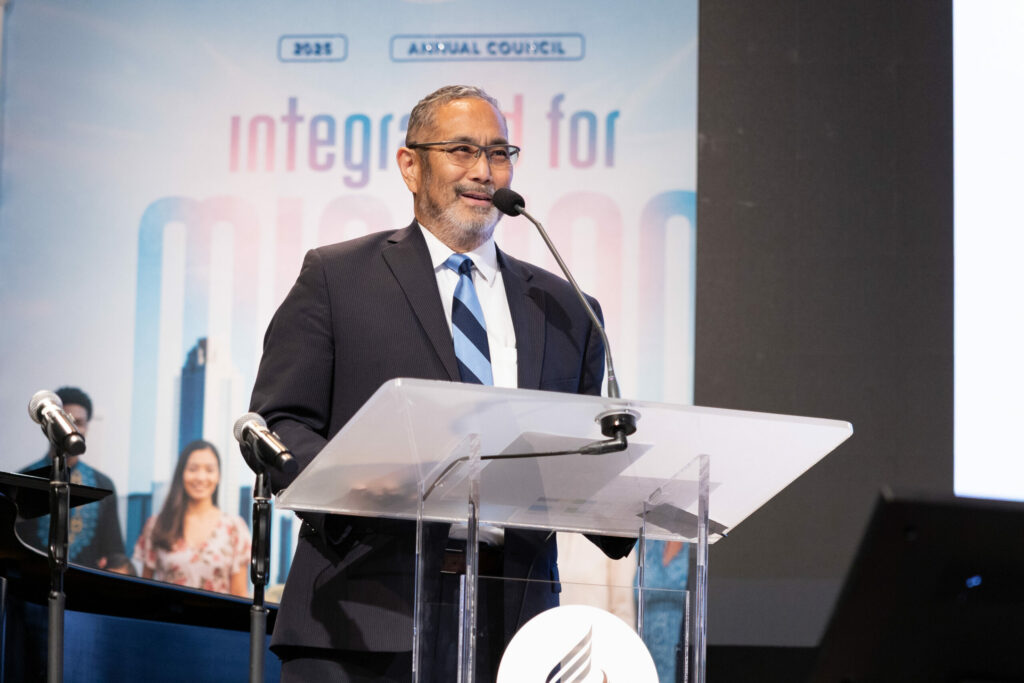
Timothy Aka, General Conference associate treasurer in charge of investments and banking, shares how the global economy is impacting financial operations of the global Seventh-day Adventist Church. [Photo: Peterson Fagundes]
Financial Results and GC Session Report
Douglas returned to the podium to share the church’s financial statements as of August 2025. He mentioned a 3.9 percent increase in tithe and a 0.5 percent decrease in offerings when compared to the same period last year. Working capital—current assets minus current liabilities—is available for 12.4 months, while Liquidity—funds that can be easily converted to cash—amounts to 9.5 months.
After Douglas, associate treasurer Sabrina C. DeSouza reported on the GC Session earlier this year in St. Louis, Missouri. She reported that in a survey, 91.1 percent of those who answered found the GC Session to be either effective or very effective. She was also happy to report that actual expenses were US$1.1 million less than what had been budgeted.
According to DeSouza, 53 percent of funds during GC Session were spent in technology and communication. The rest was spent in operations and safety (28 percent) and delegate experience and support (19 percent). The cost of the event per church member reached just 24 cents in U.S. dollars, she reported.
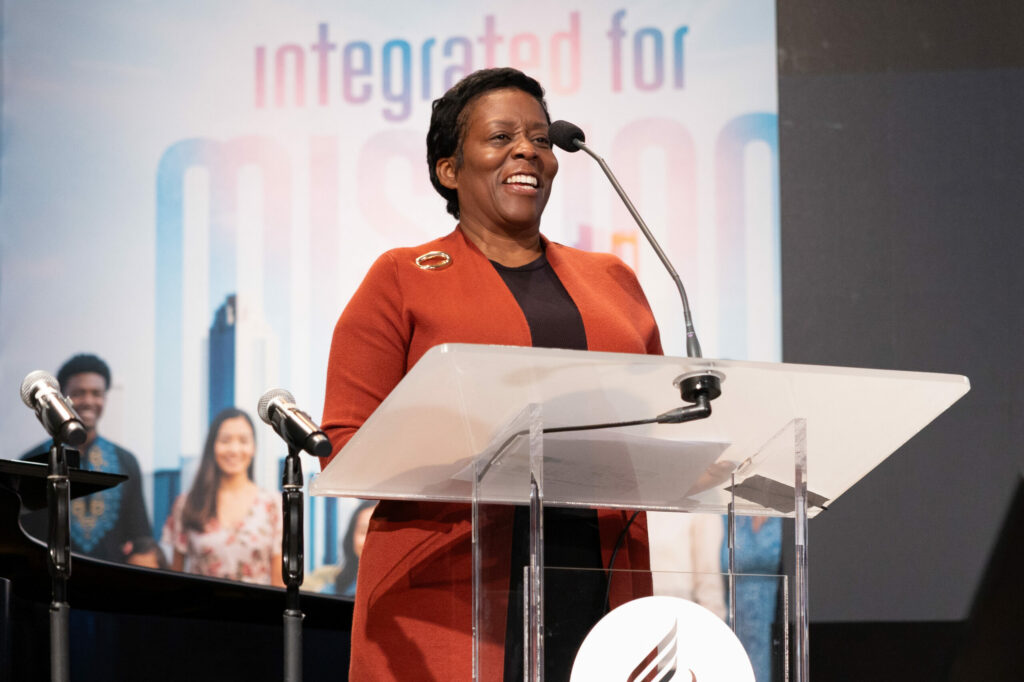
Sabrina C. DeSouza, General Conference (GC) associate treasurer, shares a report on the GC Session held earlier this year in St. Louis, Missouri. [Photo: Peterson Fagundes]
GC Session Offering for Digital Strategy for Mission
GC associate treasurer Richard Stephenson, in charge of digital strategy, reported on the special GC Session offering, which was earmarked for supporting digital strategy for mission initiatives. The GC Session special offering amounted to more than US$3.8 million, he reported, “to fund and support [regional] digital evangelism.”
Stephenson explained that plans include initiatives designed so “every click becomes an invitation to engage, and most important, an opportunity to connect an online seeker with their local Adventist church.” That second part is essential, Stephenson emphasized, seeking ways to connect a seeker with a brick-and-mortar congregation. “If we don’t have that anchoring to a local church community,” he explained, “all of our online efforts are for nothing.”
In this sense every division of the world church was encouraged to develop strategies relevant for their corner in the world, Stephenson said. “It is with great joy that I can report to you that the Adventist Church is mobilizing digital resources for mission to reach an increasingly digital world.” That digital mission strategy is not just a plan, according to Stephenson. “It is a movement to reach people where they are.”
How Is Tithe Used?
After Stephenson’s report, undertreasurer Ray Wahlen shared an update on the use of tithe, or the 10 percent that members return to God to fund ministerial and evangelism activities. Based on current policies, Wahlen reminded GC EXCOM members that “administrative and executive committees need to understand scriptural and Spirit of Prophecy counsel regarding the use of tithe.”
Worldwide, 35.7 percent of tithe returned by faithful church members was used to fund pastoral work, and 29.2 percent went for operational expenses, Wahlen reported. But when finding the median in world divisions, the money spent on operating expenses in 2024 exceeded the percentage of money spent on pastors (39.7 to 36.4 percent). “Office operating became the primary use of tithes in most division territories,” Wahlen said. “This is disturbing to us, and we are still exploring what it means for the global church as a movement.” According to Wahlen, the GC Treasury team “will be working internally to study this data trend very closely.”
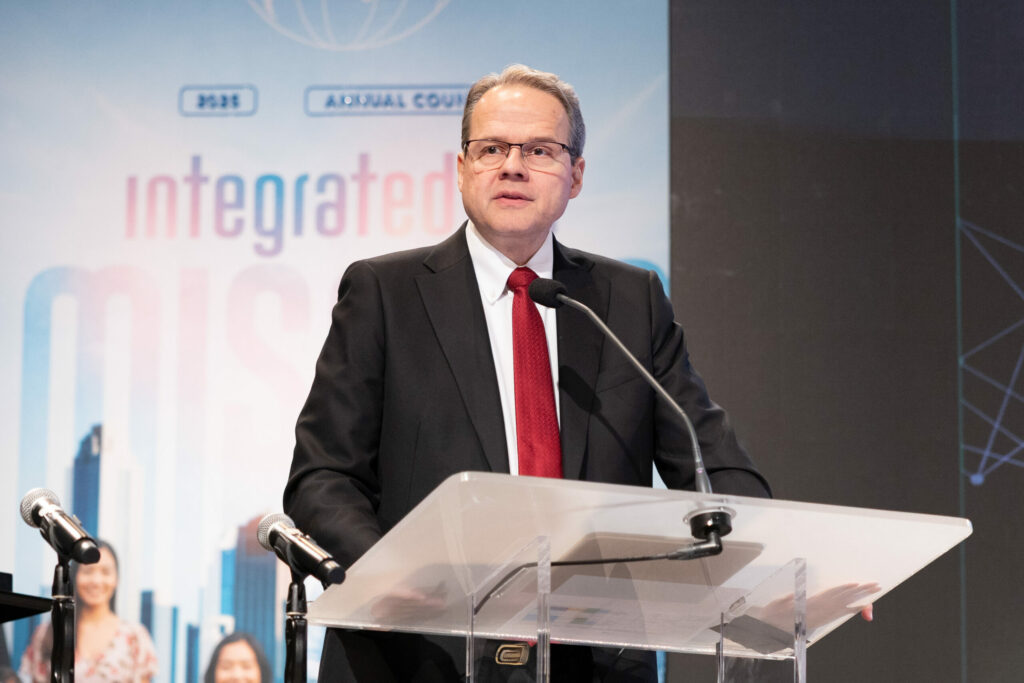
Ray Wahlen, General Conference undertreasurer, shared an update on the use of tithe during the 2025 Annual Council. [Photo: Peterson Fagundes]
Appropriations and Mission
Douglas returned to the podium to remind GC EXCOM members that according to policy, appropriations—or the money the GC sends to church regions or institutions around the world—follows a methodology that “promotes mission priorities.” Accordingly, it has been voted to have a baseline appropriation amount adjusted to the economic size of the division. To that, Douglas said, an additional amount will be added “using a matrix related to finances and mission.”
Among the new elements to take into account, Douglas said, will be a newly developed “disciple-making score” that will look at several elements, including mission and outreach activities, active return of tithe, and disciple-making plans. “The higher the score, the higher the additional appropriations,” he said. “It’s a methodology for appropriations that promotes mission.”
Budget Considerations
Wahlen then shared some budget factors that leaders took into account to prepare the 2026 budget. Among them, he mentioned the elimination of an additional 0.85 percent of tithes from the North American Division and operating expenses set within the cap established by policy.
He shared that total budgeted tithe was reduced, and that budgeted offerings and investment earnings are expected to increase. Regarding allocations, Wahlen reported that appropriations and funds for auditing services are expected to increase. The same applies to GC-administered funds, which include insurance premiums and ongoing investment in digital technology.
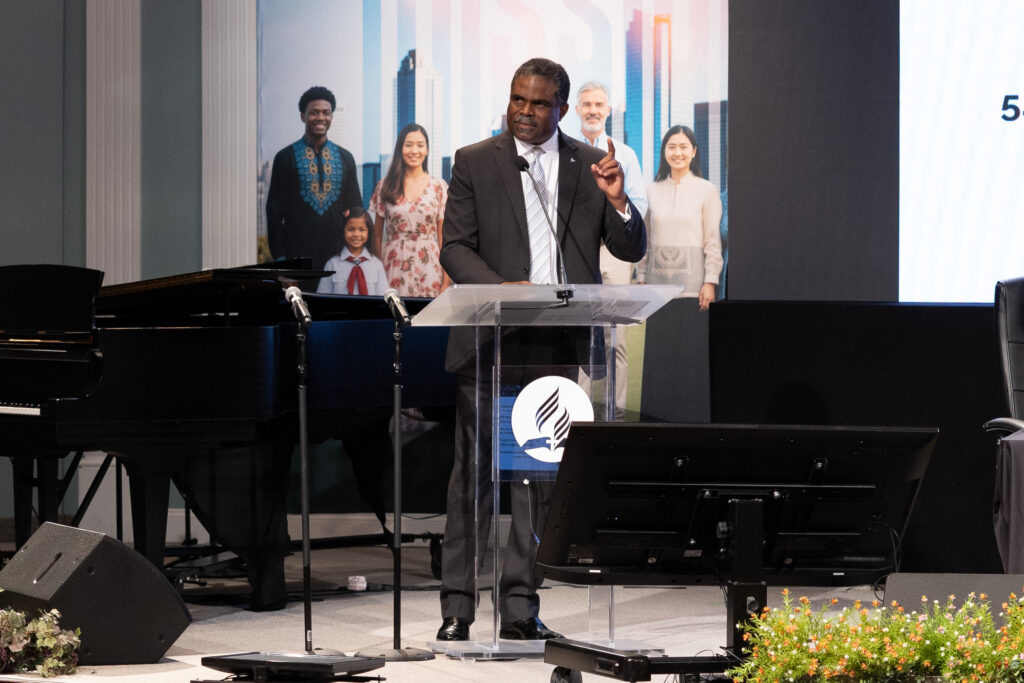
Paul H. Douglas, General Conference treasurer, shares the three areas of emphasis for this quinquennium during the 2025 Annual Council. [Photo: Peterson Fagundes]
In closing, Douglas reminded GC EXCOM members that “Mission Refocus is still alive.” He shared that for this quinquennium, funds assigned to mission and outreach initiatives in the 10/40 window, the post-Christian window, and the urban window will amount to US$126 million. “We have a great opportunity to preach this gospel with OneVoice27,” Douglas said of the US$27 million worldwide evangelistic initiative slated for September 2027.
The challenges ahead are considerable, but “nothing is impossible for our God,” Douglas said. “When we step up to cooperate with Him, our humanity joined with His divinity will do omnipotent things.”